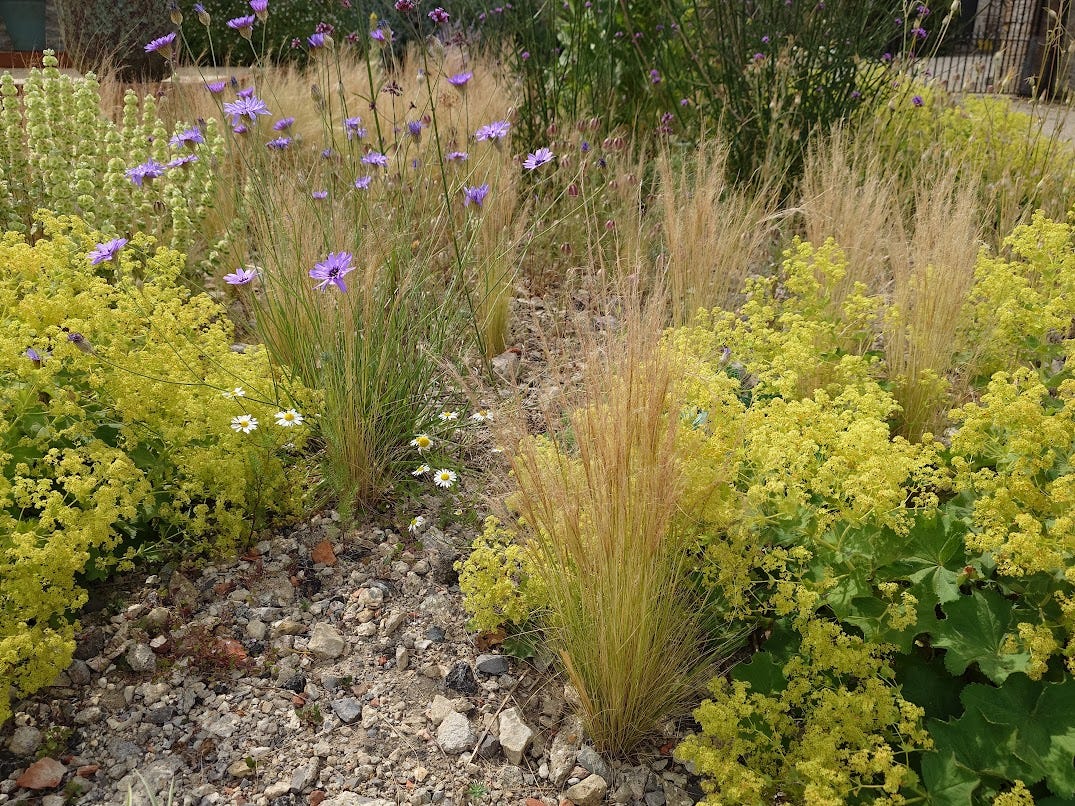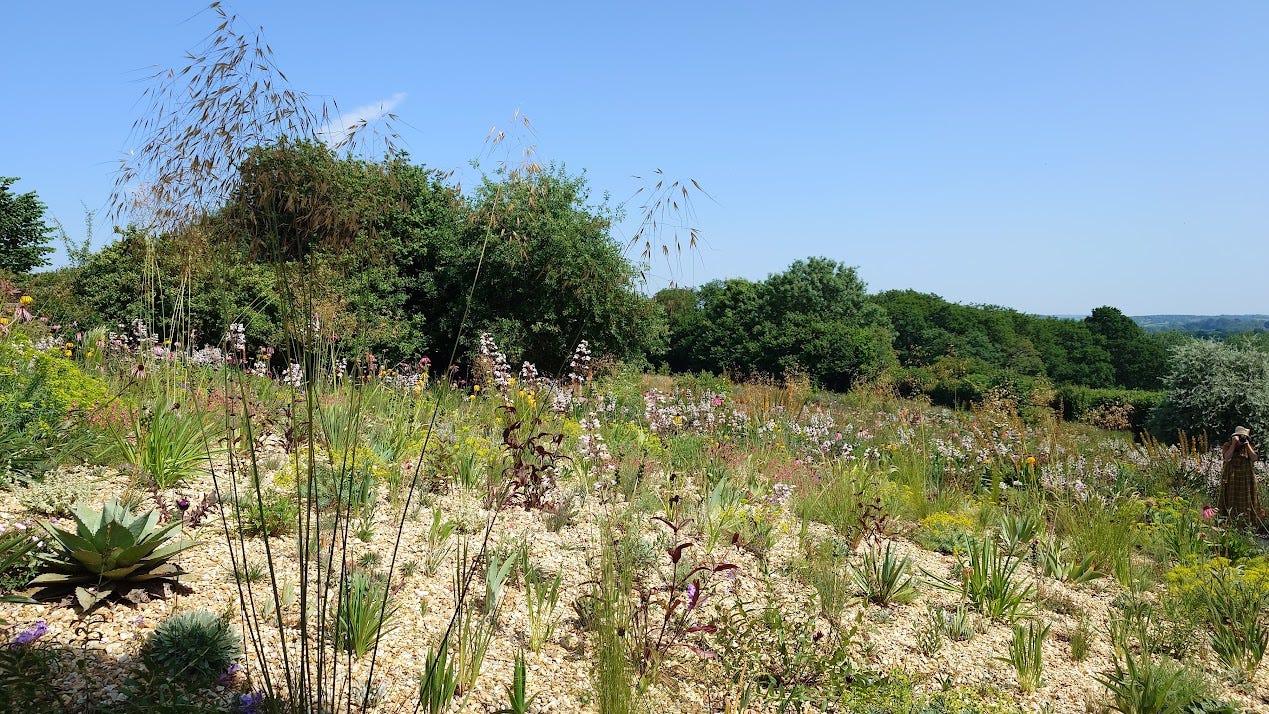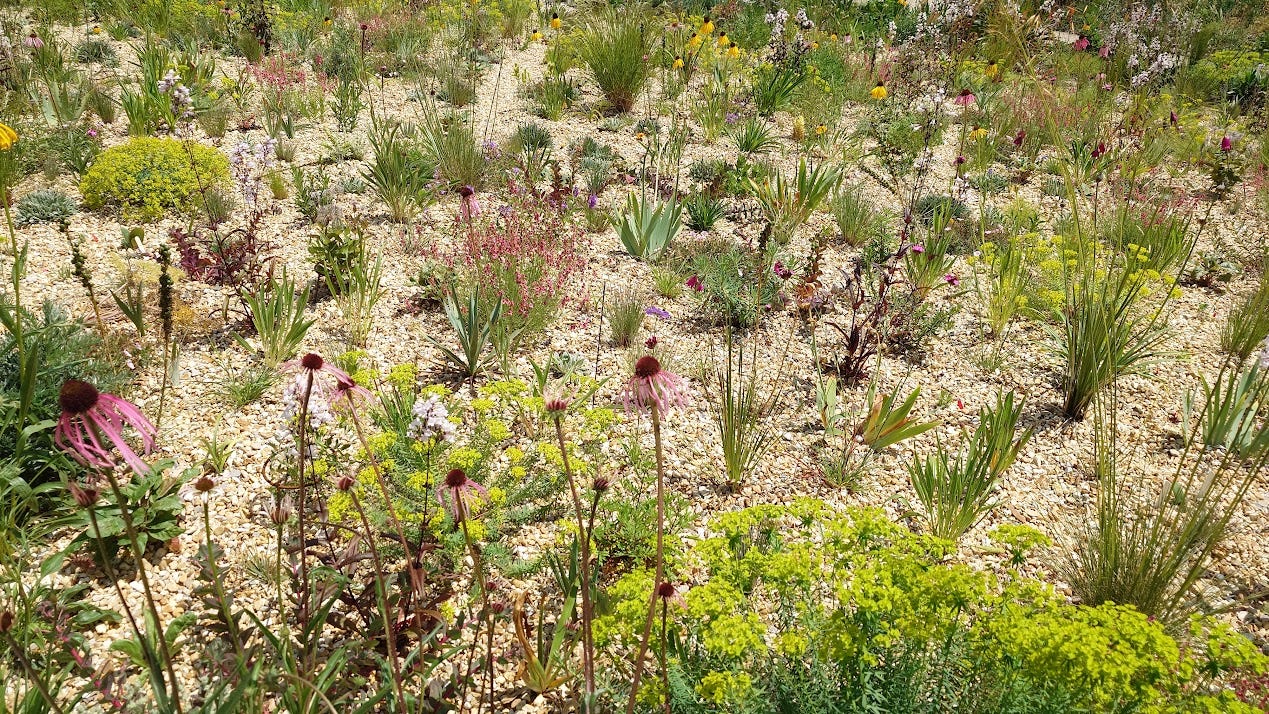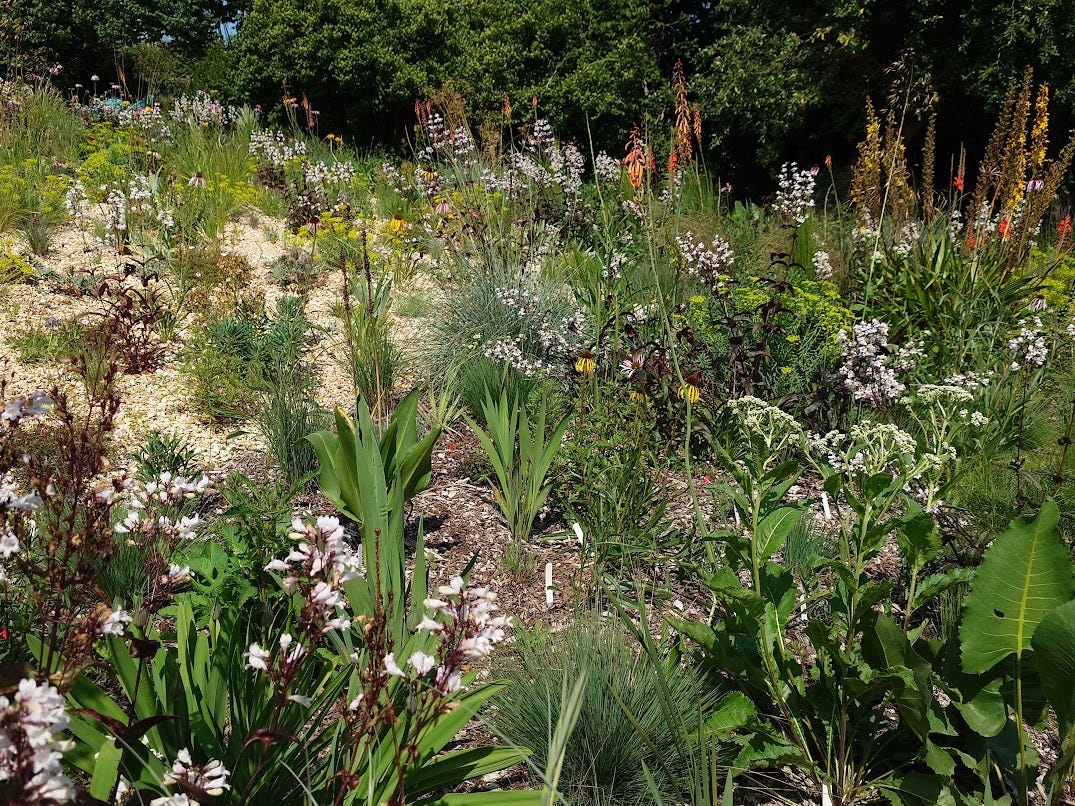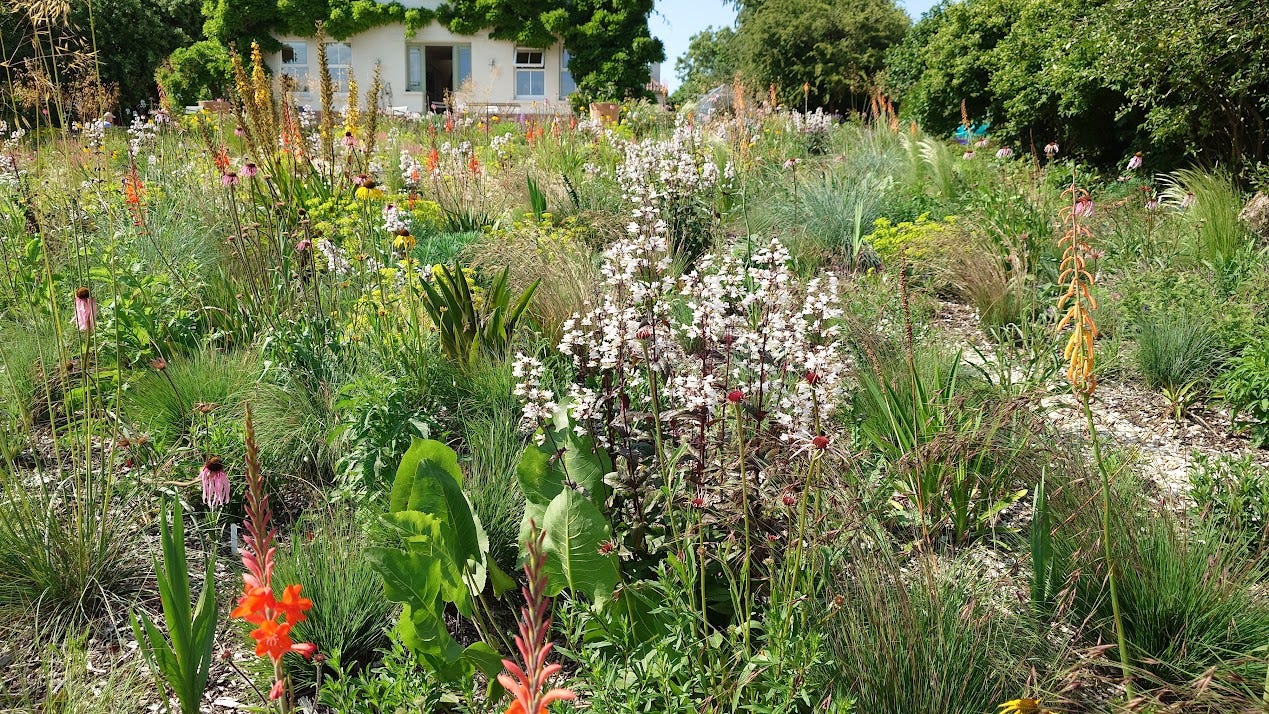Sand & gravel gardens: A resilient response to a changing climate
Resilience 7 July 2025: As climate anxiety & environmental awareness reshape how we think about gardens, the sand garden is emerging as a resilient response. I report on two fabulous examples
🌱 I'm Sally Morgan, an organic gardener and botanist who loves to experiment. Here you can read about matters relating to climate change, sustainability, organic gardening, growing veg and biodiversity, helping you to become a
climate savvy gardener 🌱☀️🌧️❄️🌡️
Resilience 7
Welcome to your monthly newsletter that delves into a particular topic (the full article is available to paid subscribers, but free subscribers can read a good section of it)
Sand and aggregate gardens are gaining renewed interest in response to climate change. Increasingly, designers and ecologists are turning to layers of sand, gravel, and crushed stone to create well-drained, low-nutrient growing conditions that mimic Mediterranean and steppe ecosystems. These gardens support drought-tolerant, deep-rooted species, reduce reliance on irrigation, offer long-season interest with minimal maintenance and can support greater biodiversity. Rather than lush abundance, sand gardens tend to highlight space, shadow, and structure, with plants given room to thrive.
I can vouch for the drought tolerance here. According to my weather station, the garden has had less than 100mm of rain since 1 March. March was almost completely dry, and I held off mulching because the soil was so parched it needed a proper soaking first. Since then, we've had just 35mm or so in each of April, May and June, less than half the average, with most of it falling in short bursts over just a few days. June’s average temperature was 19°C, with a peak of 34°, so a tough spring and early summer. And yet, my experimental sand and rubble areas have thrived without any watering.
I wrote about sand pioneer Peter Korn in a post last October, outlining his methods and the advantages of growing sand. He believes that the plants he produces are tougher and better suited to low maintenance plantings in public spaces etc. He rarely waters, even in a drought. The top layer of sand may be dry, but underneath there is moisture which the roots can access. In addition, the sand is soon colonised by mycorrhizal fungi and they access water and nutrients for their partner plants. The lack of nutrients prevents lush growth, which is a good thing, as slow growth creates more resilient plants with a longer life. The key is to keep the organic matter content low, so the plants are cut back in winter and all leaves etc are removed.
A couple of weeks ago, I joined a Garden Masterclass visit to two gardens with that are exploring sand/gravel gardens as experimental, climate-resilient spaces that embrace ecological function, while still offering strong visual and emotional appeal: James Hitchmough’s new garden in Somerset and Dan Pearson’s Sand Garden near Bath.
[Note: Garden Masterclass plans to repeat the visits next year]
James Hitchmough’s Garden
The garden of James Hitchmough, Emeritus Professor of Horticultural Ecology at the University of Sheffield, lies to the west of me, near Chard in Somerset.
If his name doesn’t immediately ring a bell, you may recall the stunning floral displays at the London 2012 Olympic Park, designed by James and Nigel Dunnett. Their work set a new standard for large-scale ecological planting in a public setting, creating dramatic, sustainable displays that celebrated British biodiversity. They were not only beautiful, but required minimal irrigation, supported urban wildlife, and introduced millions of people to the idea that public green spaces can be ecologically rich, low-maintenance, with real wow factor.
Now retired, James has moved to Somerset and embarked on an ambitious personal project: creating a garden that champions dynamic, seed-based planting systems inspired by wild landscapes. The sloping site with fabulous views, extends to around 4 acres and features a wildflower meadow, wood pasture, and orchard, all of which focus on biodiversity, climate resilience, and visual drama.
In this post, however, I want to talk about the gravel garden on the south-facing slope below the terrace. Here, the plan is to create an extraordinary planting that both wows visitors and supports local biodiversity.
James opted for gravel rather than sand for two reasons: firstly, sand encourages self seeders which cause a lot of weeding and you need to be able to identify the seedlings at a very early stage and secondly, a sand mulch can disappear in a couple of years as the worms move it around.
The planting strategy uses a combination of structural species spaced deliberately, with the gaps filled by a mix of other species at specific densities and ratios, most grown from seed on site. James is aiming for an open canopy rather than a closed one, to encourage diversity.
The planting started in 2024 and is still continuing as material becomes available. Last year there was plenty of spring rain, but this year its been very different, with hardly any rain so the gravel garden has been watered every few weeks to ensure the plants become established.
The gravel planting covers approximately 250m², with an additional 1,250 m² of woodchip-mulched soil at the base of the slope. The 25mm gravel varies between 140 and 200 mm in depth, lying on top of an equivalent depth of sand, which itself rests on subsoil.
As large numbers of plants were required (around 250 key structural plants and 1,700 filler plants) many were sown from seed on site. Most require winter chill for germination, so they were sown into sharp sand in autumn and planted out the following spring when large enough. Interestingly, James has chosen to sow into sand as he had had problems with commercial composts, which often introduce pathogens, especially fungal ones. As you may remember, I too have been trialling the sowing of seed into sharp sand with great success.
Tip Planting in gravel. James explained his planting method which is to move the gravel to one side, dig out to the required depth and add around 50mm depth of sharp sand to the bottom of the hole, place the plant on this and add more sand around the plant, move the gravel back and water well. He doesn’t remove the compost from around the rootball, as that would shock it too much. If it doesn’t rain, the plants are watered once a week for about three weeks to enable the roots to get established and to begin to colonise the sand.
The Sand Garden at Dan Pearson’s Hillside
Last week, I wrote about the perennial garden at Hillside, Dan Pearson’s private garden in a valley just north of Bath, which you can read here. In this post, I am writing about his Sand Garden, which was inspired by his work on the Delos Garden at Sissinghurst.





